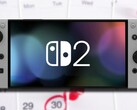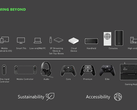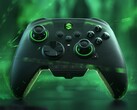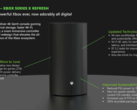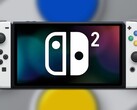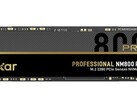No way the Nintendo Switch 2 will be a Steam Deck killer - despite alleged PS4-like prowess
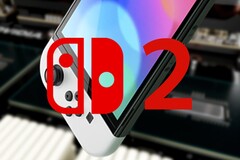
A recent email that came to light during the FTC v. Microsoft case makes mention of a next-generation Nintendo Switch having "closer alignment to Gen8 platforms." This led to the assumption that the performance of the upcoming Switch 2 will be close to that of an Xbox One or PS4.
Given the closer alignment to Gen8 platforms in terms of performance and our previous offerings on PS4 / Xbox One, it is reasonable to assume we could make something compelling for the NG Switch as well. It would be helpful to secure early access to development hardware prototypes and prove that out nice and early.
Given the nature and pricing of the Switch, gamers may need to temper expectations regarding performance. For all we know, "closer alignment" could mean it will match the PS4, or it could be as little as 1% closer to PS4 performance. Considering Nintendo's track record when it comes to prioritising affordability and fun factor over graphical fidelity, it seems unlikely that Nintendo will chase performance figures that would blow past even the best PC handhelds on the market.
Recent leaks point to a Nintendo Switch 2 powered by a custom Nvidia T239 Ampere SoC with 1,536 shaders and around 4 TFLOPs of performance. That said, other estimates place performance at 2.4 TFLOPs, or even as little as sub-2 TFLOPs after Nintendo has its way customising the chipset for handheld use. The leaks are all over the place and could have no basis in reality. Aside from that, even the current Switch had four cores lopped off its Nvidia Tegra X1 — normally an octa-core SoC, but a quad-core in the Switch — in the name of efficiency.
TFLOPs don't mean much when it comes to performance in games, but the metric could give us an idea of comparative performance, and a 6-10x performance jump simply doesn't make much sense in a Switch-sized device. Given the Nintendo Switch is a preconfigured hardware platform that benefits from the same validation and customisation as couch consoles, Nintendo doesn't necessarily need massive performance gains from a Switch 2, to begin with.
For reference, the Steam Deck, a more expensive handheld that also stakes much of its financial success on game sales rather than hardware sales, has but 1.6 TFLOPs of performance — in the neighbourhood of the PS4 — while also being almost twice as heavy as the original Switch, and bulkier to boot. The Steam Deck also only manages its PS4-tier performance while pushing the full 15 W to the SoC. The proposed T239 Switch 2 SoC will likely have a TDP range similar to the current-gen Switch, unless Nintendo plants to drastically alter the form factor of the device.
Testing has shown that the entire first-generation Nintendo Switch draws less than 18 W while gaming in the undocked configuration and charging the battery with the JoyCons attached. The Steam Deck can push almost that much power to the CPU alone. Without charging the battery, the Switch cuts its power consumption almost in half, to a cool 8.9 W.
More performance will quickly chase up the power draw, which would demand a bigger, heavier battery for the Switch 2 (the Steam Deck needs 40 Wh to achieve less play time than the Switch OLED's 16 Wh unit delivers). The original Switch sips power. If Nintendo wants to keep even vaguely the same form factor, Deck-killer performance seems very optimistic.
Vitally, the Switch has also historically been one of the cheapest entry-points into console gaming, with an MSRP of US$299.99. Hardware has come a long way since the Switch launched, and Nintendo's economies of scale will help it keep prices down, but any drastic leaps in performance would likely drive up the price of a Switch 2 significantly.
Pushing for more performance with a more expensive SoC, bigger battery, and beefier cooling system — if it's even possible to cool twice the TDP in such a small footprint — just doesn't make sense while still keeping the device affordable, lightweight, and comfortable to use.
Nintendo Switch OLED with Neon Red and Neon Blue Joy-Con on Amazon.




